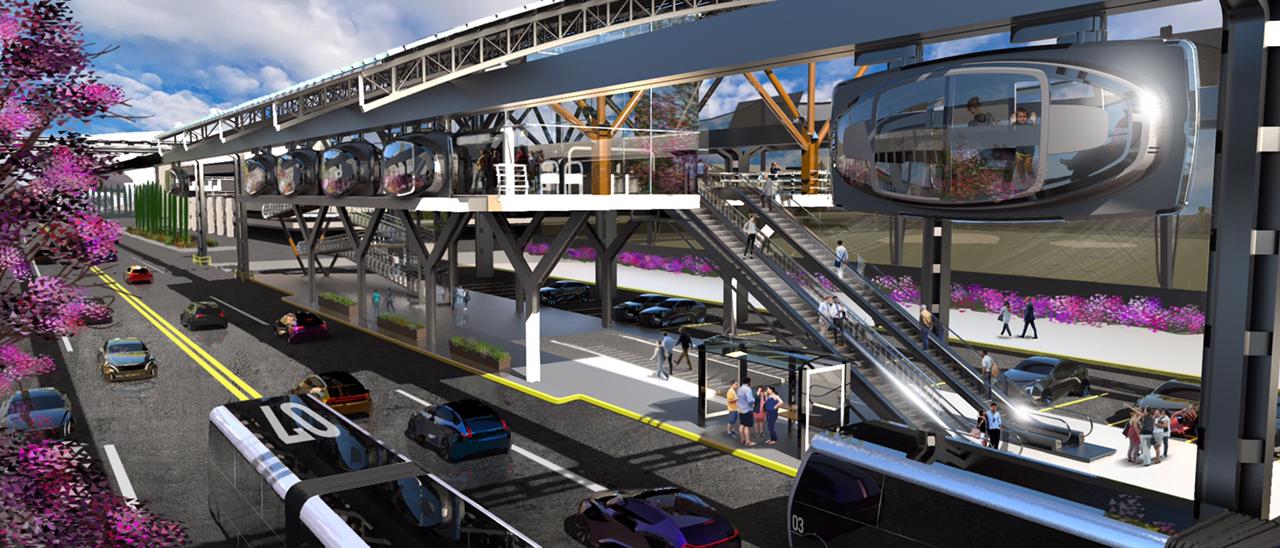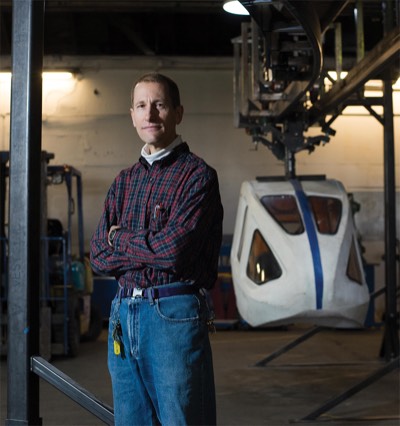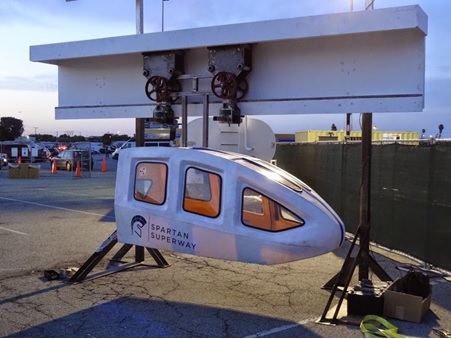What is Superway?
The SPARTAN Superway is a long-term research initiative at San José State University to establish solar powered automated rapid transit ascendant network (“SPARTAN”) systems for urban environments.
Since its inception in 2012 by professor Burford Furman with Ron Swenson of The International Institute of Sustainable Transportation (INIST), more than 200 students, mentors and faculty have done extensive research, published a major study, written numerous publications, produced functional prototypes of key subsystems, and established an international alliance of universities and industry collaborators on the pathway to commercialization.

 Each year students that participate in the program are exposed to hands-on manufacturing,
designing, programming and the current meta of renewable energy. Most importantly,
students get to work in various teams and sub-groups with an engineer in the industry,
make formal presentations, build relationships with various companies, and learn how
to properly network.
Each year students that participate in the program are exposed to hands-on manufacturing,
designing, programming and the current meta of renewable energy. Most importantly,
students get to work in various teams and sub-groups with an engineer in the industry,
make formal presentations, build relationships with various companies, and learn how
to properly network.
What are we about?
Sustainable Mobility System for Silicon Valley (SMSSV) is an interdisciplinary project from San José State University to design a PRT (Personal Rapid Transport) system using renewable resources.

Project Overview
Present mobility options, especially in dense urban areas are becoming more and more unsustainable.
Major issues that plague current options are:
- Traffic congestion
- Loss of productivity from time spent in commuting and/or parking
- Continued use of and dependence on hydrocarbon fuels
- Increased possibility of accidents that injure people and damage property
- Decrease in quality of life for residents (wasted time, increased stress, noise, smog, safety)
- High cost of ownership for private vehicles, especially new 'green' vehicles, such as EVs and HEVs
- Excessive consumption of raw materials in the production of automobiles
- Environmental degradation from greenhouse gas emissions and by products from wear out of parts
- Inadequate mass transportation options (slow, limited service area, and relatively high cost)
Fundamentally different approaches to personal mobility are needed to address the problems listed above and achieve sustainability. An automated transportation network (ATN) system utilizing 'pod cars' is one such approach (see for example: Irving, et. al. (1978), Rydell (2000), and Shawber (2012)).
We propose to develop and bring to market the elements of a solar powered ATN system that will be scalable, replicable, and that can be located within existing rights of way in urban locales.